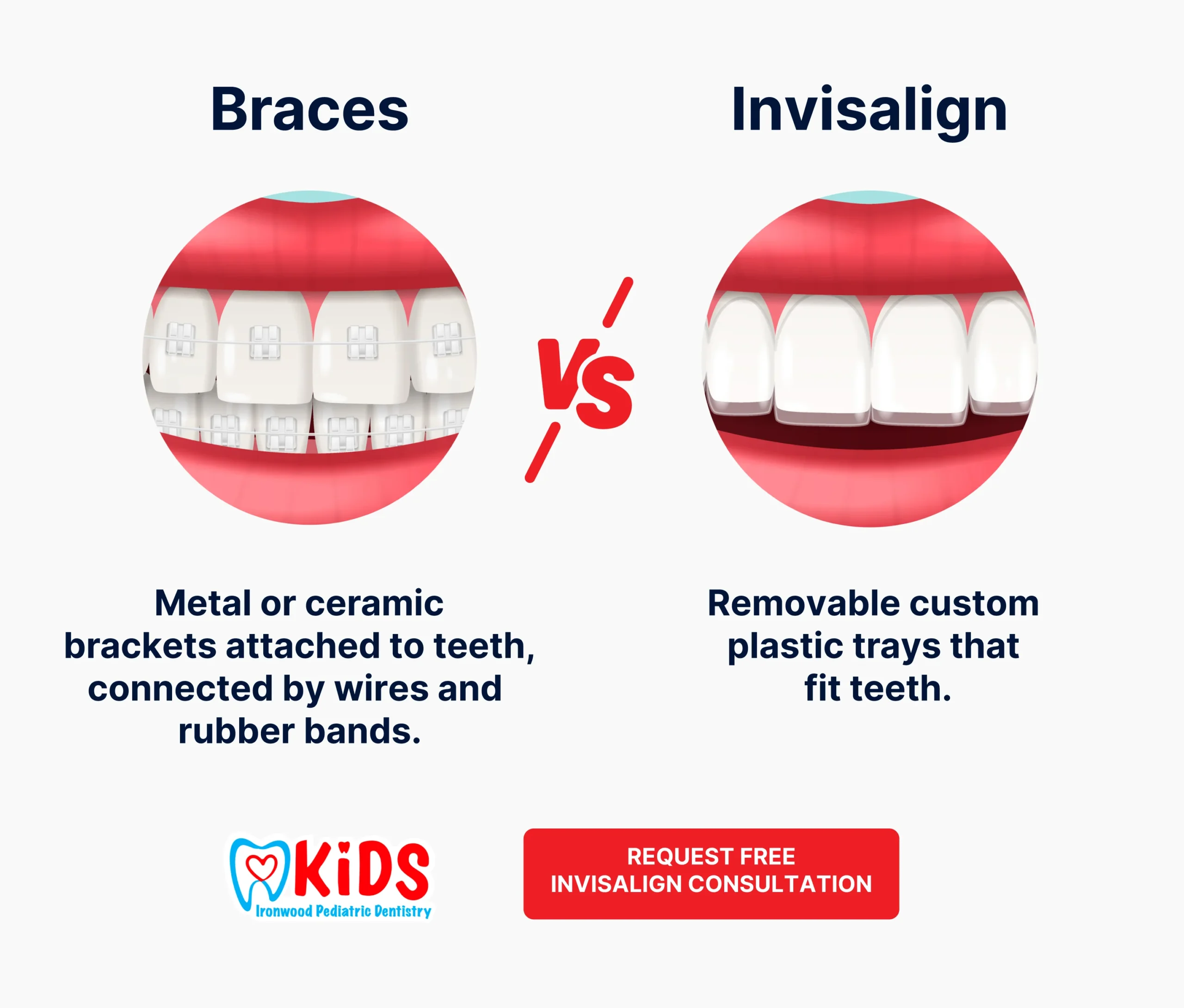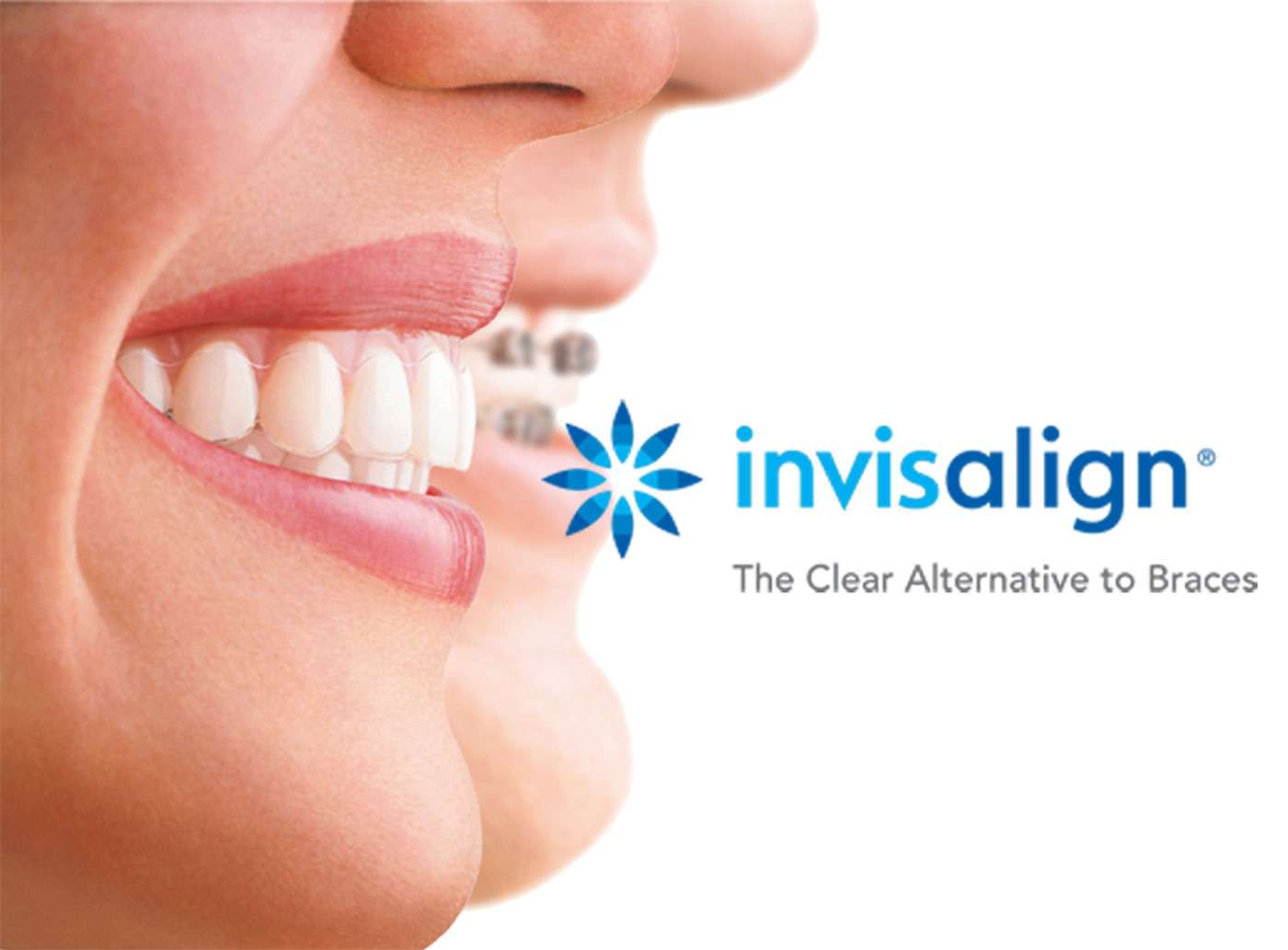Invisalign for Teenagers: A Modern Solution to Straightening Young Smiles
Invisalign for Teenagers: A Modern Solution to Straightening Young Smiles
Blog Article
Invisalign vs. Standard Braces: Which Alternative Is Right for You?
When considering orthodontic treatment, the selection in between Invisalign and typical dental braces presents several vital variables that warrant cautious analysis. Invisalign provides a discreet option with detachable aligners, while traditional braces supply an extra noticeable yet effective solution for severe imbalance.
Review of Therapy Options

On the other hand, conventional braces consist of steel brackets and cords that are adhered to the teeth. This technique applies constant stress with time to achieve placement. While effective for intricate orthodontic concerns, traditional braces need routine brows through for adjustments and can pose obstacles in keeping oral hygiene due to the trouble of cleansing around cords and brackets.
Both options have their merits, and the selection usually depends upon certain oral conditions, way of life preferences, and client compliance. Inevitably, seeking advice from an orthodontic expert is critical for establishing one of the most suitable treatment strategy customized to private needs. Understanding the nuances of each option can considerably affect the total success of orthodontic treatment.
Aesthetic Considerations
A significant aspect influencing the choice in between Invisalign and traditional braces is the visual charm each therapy supplies. Invisalign aligners are crafted from clear plastic, making them practically undetectable when worn.
On the other hand, conventional dental braces consist of metal brackets and cables, which can be more visible. While innovations in orthodontic innovation have caused the advancement of smaller sized braces and tinted elastics, standard dental braces still keep an even more obvious account. For some individuals, the presence of dental braces might discourage them from looking for required therapy.
Ultimately, the choice between Invisalign and typical dental braces might hinge on individual choices pertaining to visual appeals. People who prioritize discretion commonly lean toward Invisalign, while those who are less worried about presence might select conventional dental braces. Understanding the visual effects of each alternative is important for making an informed decision that aligns with one's way of living and preferences.
Comfort and Convenience

In regards to comfort, Invisalign aligners are removable, enabling clients to enjoy their preferred foods without restriction and maintain optimal oral hygiene. Cleaning and flossing are streamlined, as the aligners can be gotten during these routines, whereas conventional dental braces require careful maneuvering around brackets and wires.
Additionally, Invisalign's progressive system permits fewer orthodontic visits. Patients generally get several sets of aligners simultaneously, which can simplify the therapy process and reduce time spent in the orthodontist's chair. In contrast, standard dental braces demand regular adjustments, making them much less hassle-free for those with hectic timetables. Invisalign. On the whole, the comfort and benefit of Invisalign make it an appealing choice for numerous individuals seeking orthodontic treatment.
Treatment Period and Effectiveness
While both Invisalign and traditional dental braces are effective in remedying dental misalignments, the period of treatment can differ significantly between the 2 alternatives. Typically, Invisalign therapy can take anywhere from 12 to 18 months, relying on the complexity of the case. The look at this site clear aligners work by progressively shifting teeth right into their wanted settings, and regular important link follow-ups with an orthodontist help make certain progress stays on course.
On the other hand, conventional braces typically require a longer commitment, typically ranging from 18 months to 3 years. This is due to their set nature and the usage of brackets and cords, which can be more efficient for serious misalignments and complicated instances (Invisalign). The treatment efficiency of standard braces is well-documented, as they permit for exact changes and greater control over tooth motion
Ultimately, the selection between Invisalign and conventional braces may rest on both the anticipated therapy period and the details oral issues handy. Consulting with an orthodontist is crucial, as they can provide customized suggestions based upon private demands, ensuring the chosen method lines up with wanted timeframes and outcomes.
Price Contrast and Insurance Coverage Options
Price plays a substantial duty in the decision-making process for people considering orthodontic therapy, whether selecting Invisalign or conventional dental braces. On average, the price of Invisalign varieties from $3,000 to $8,000, while traditional braces commonly set you back in between $2,000 and $6,000. Factors influencing these prices consist of the complexity of the case, the duration of therapy, and geographical place.
Lots of oral insurance coverage plans supply partial insurance coverage for orthodontic therapies, yet the specifics can vary widely. Typically, standard dental braces might be extra regularly covered by insurance policy plans compared to Invisalign, which some insurers classify as a cosmetic procedure.
Additionally, numerous orthodontic techniques offer flexible settlement plans, making both treatment alternatives a lot more available. Patients need to ask about potential financing alternatives and price cuts for ahead of time settlements. Reviewing the complete cost, including insurance policy advantages and layaway plan, is necessary for making an educated decision that straightens with both aesthetic choices and spending plan factors to consider.

Final Thought
In summary, the choice in between Invisalign and conventional dental braces rests on numerous elements, consisting of visual choices, convenience, treatment duration, and price. Invisalign uses a very discreet, detachable option that facilitates oral health and nutritional adaptability, while traditional braces might be much more ideal for complicated dental concerns and typically come with a lower cost point. Ultimately, consultation with an orthodontist is necessary to evaluate individual circumstances and establish the most appropriate treatment choice for accomplishing optimal dental alignment.
When taking into consideration orthodontic therapy, the option between Invisalign and standard dental braces presents a number of vital factors that warrant mindful evaluation.Comparing Invisalign and standard dental braces exposes unique treatment options for orthodontic improvement.While both Invisalign and typical braces are efficient in fixing dental imbalances, the duration of useful content therapy can differ considerably in between the two alternatives.Cost plays a considerable role in the decision-making process for individuals thinking about orthodontic therapy, whether deciding for Invisalign or conventional dental braces.In summary, the choice between Invisalign and standard braces hinges on numerous variables, consisting of aesthetic choices, comfort, treatment duration, and expense.
Report this page